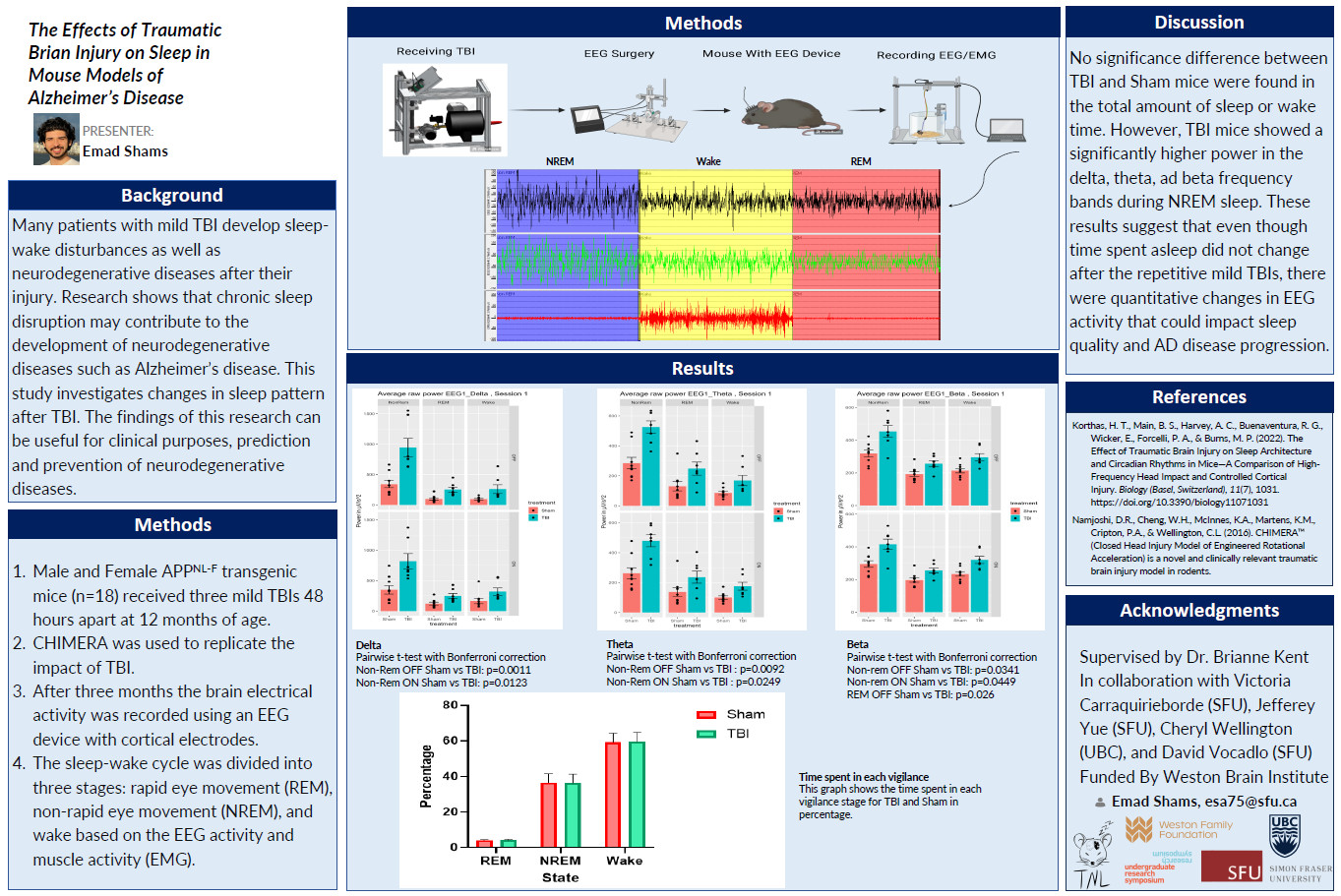The Effects of Traumatic Brain Injury on Sleep in Mouse Models of Alzheimer’s Disease
Main Article Content
Abstract
Many patients with mild TBI develop sleep-wake disturbances after their injury. Research shows that chronic sleep disruption may contribute to the development of neurodegenerative diseases such as Alzheimer’s disease. In this study we investigate the impact of repetitive mild TBIs on sleep in mouse models of Alzheimer's disease (AD) using an EEG/EMG device. To administer a mild TBI we used the Closed-Head Impact Model of Engineering Rotational Acceleration (CHIMERA). Male and female APPNL-F transgenic mice containing a humanized Aβ region with a Swedish “NL” mutation and the Iberian “F” mutation (n=18) received three mild TBIs 48 hours apart at 12 months of age. After three months, brain electrical activity was recorded using an electroencephalogram (EEG) device with cortical electrodes. The EEG data was analyzed using Sleep Sirenia software. The sleep-wake cycle was divided into three stages: rapid eye movement (REM), non-rapid eye movement (NREM), and wake based on EEG activity and muscle activity (EMG). No significant differences between TBI and Sham mice were found in the total amount of sleep or wake time. However, TBI mice showed a significantly higher power in the delta, theta, and beta frequency bands during NREM sleep. These results suggest that even though time spent asleep did not change after the repetitive mild TBIs, there were quantitative changes in EEG activity that could impact sleep quality and AD disease progression.
Faculty Supervisor: Dr. Brianne Kent, Department of Psychology, Simon Fraser University
Article Details

This work is licensed under a Creative Commons Attribution-NonCommercial-NoDerivatives 4.0 International License.

